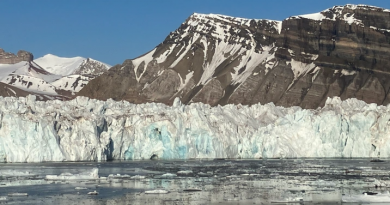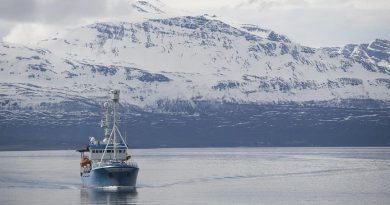It’s a Walrus
Weather: -10C, grey and snowy Kinngait (Cape Dorset), Nunavut – We’re so behind on filming, Jean and Luc went straight out to shoot Cape Dorset visuals before it got dark. I went off to Kinngait Studios to speak to the manager Bill Ritchie and try to get everything set up for tomorrow.
Cape Dorset is a community of around 1200 people. And it’s one of the most famous communities in Canada’s North. In the 1950s, Canadian artist James Houston decided to teach print-making to the Inuit, in and around Cape Dorset. A studio was set up, and in 1959 a first collection of prints was released.
The print collection became an annual event and eventually, a Canadian art phenomenon. In 2009, the collection celebrated its 50th anniversary. The success of the collection brought unprecedented attention and money into the community.
Some of Canada’s most famous artists live here, including Kenojuak Ashevak. Her 1960 work “Enchanted Owl” sold for $58, 650 at auction in 2001, a record price for a Canadian print.
But there’s a downside to all this. While many carvers and artists here are world-class, there’s also an awful lot of pseudo-artists in the community trying to cash in on the community’s reputation. They slap ‘Cape Dorset’ on a piece of soap stone and try to sell it for $500 to gullible tourists.
I know, because on the five-minute walk from our hotel to the studios, at least three people tried to sell me some pretty dismal-looking work. It’s like they started carving it, got bored after two minutes, banged it on the floor a couple of times and decided to call it art.
Later on that evening, I’m in the grocery store and a teenager comes up to me in the cookie aisle with a sorry-looking carving in his hand. I can’t even really tell what it is. “It’s a walrus,” he said. “$40.”
“No thanks,” I said. “Not today.”
“But I need $40 so I can buy some food,” he said.
I couldn’t tell if it was true or not but I still felt guilty as I pushed my cart away.



